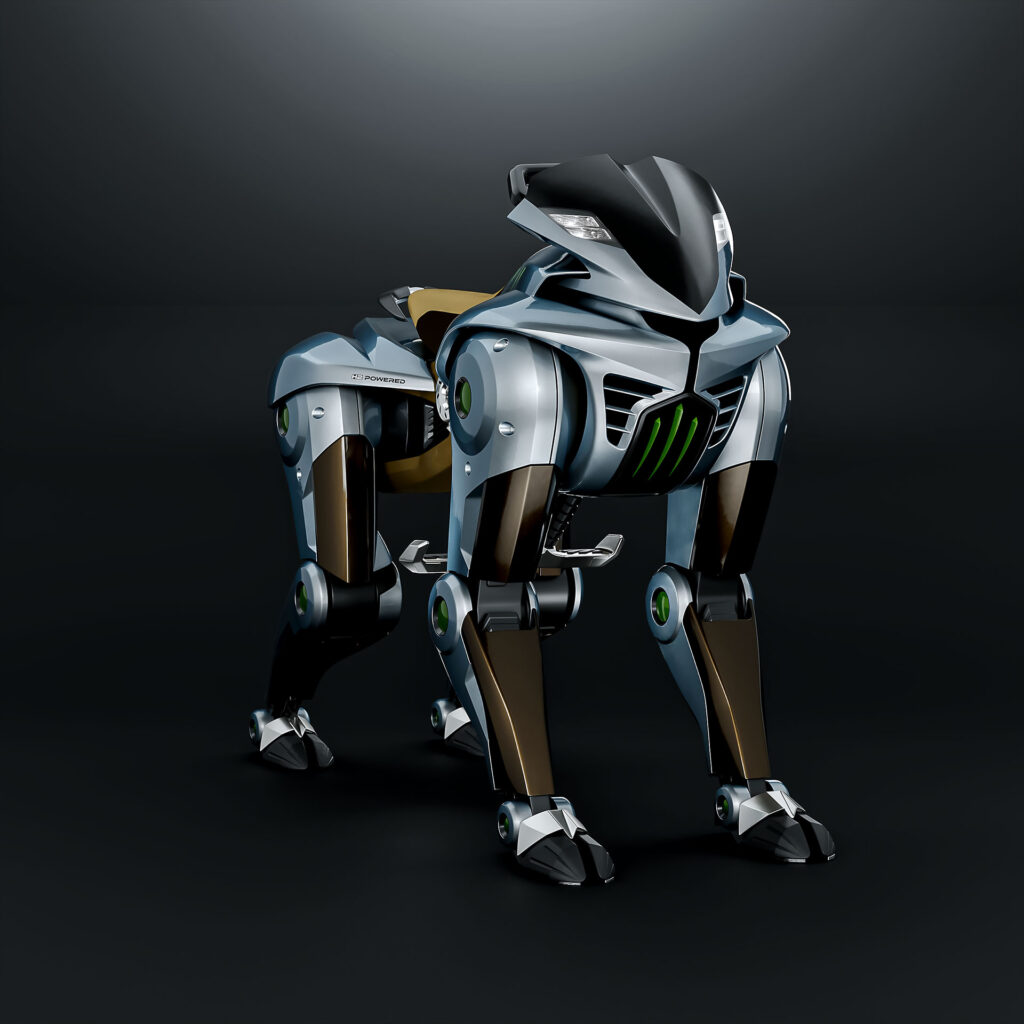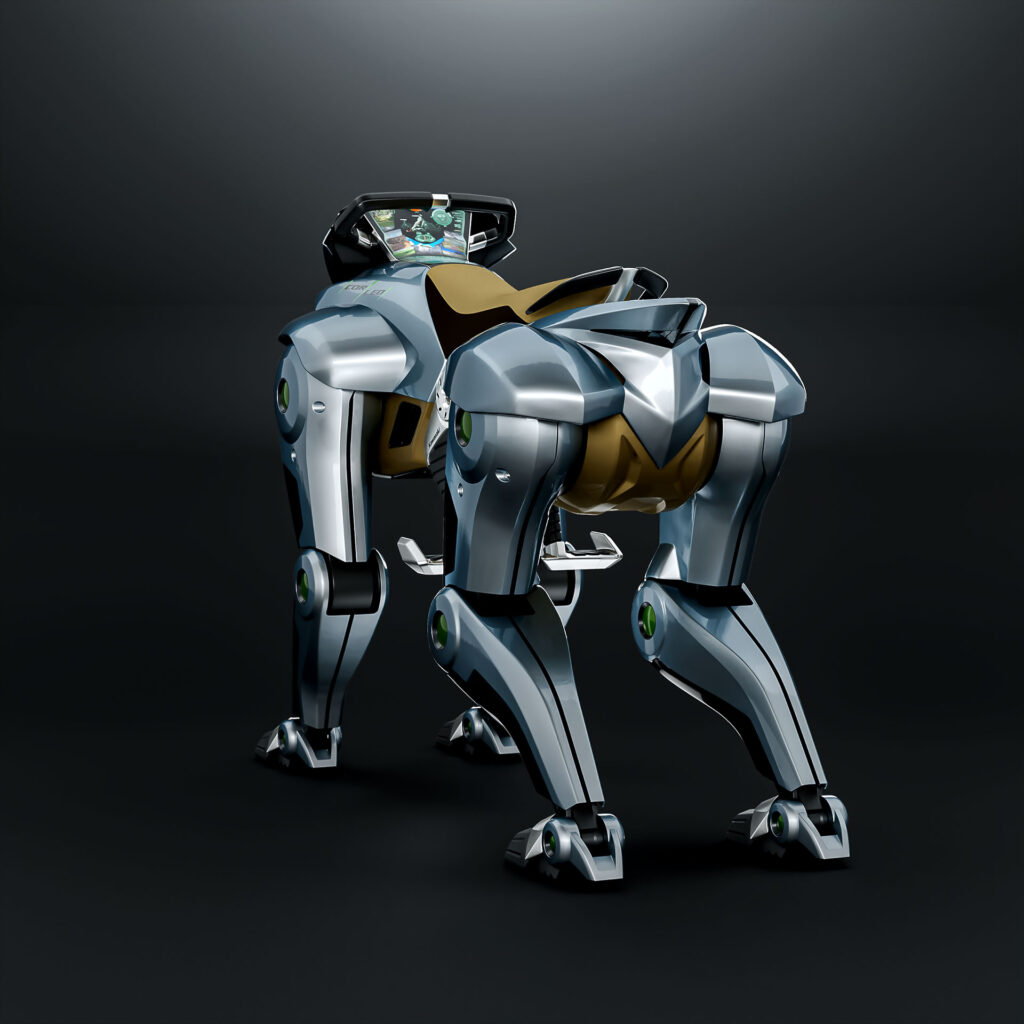Kawasaki Corleo Four-Legged Robot: The Future of Mobility, Precision, and Rescue
Introduction: A New Chapter in Robotic Mobility
The future of robotics is evolving at a rapid pace, with robots becoming increasingly versatile, capable, and adaptable to a wide variety of environments and tasks. Among the companies leading the charge in robotic innovation, Kawasaki Heavy Industries has earned a reputation for producing top-of-the-line industrial robots that are setting new standards in automation and precision. Following their successful ventures into humanoid and collaborative robots, Kawasaki is now venturing into a bold new direction with the Kawasaki Corleo Four-Legged Robot.
This innovative robot is designed to traverse the most challenging terrains with ease, offering unprecedented mobility, agility, and precision. Imagine a machine that can perform tasks in environments that are typically off-limits to both humans and traditional wheeled robots, such as disaster zones, rugged landscapes, and even remote, hard-to-reach places. The Kawasaki Corleo Four-Legged Robot aims to solve real-world challenges that are beyond the capabilities of existing robotic systems.
In this blog post, we’ll explore the design, capabilities, and potential applications of the Kawasaki Corleo Four-Legged Robot, and how it could transform a wide range of industries, from search and rescue operations to environmental monitoring and industrial automation.
The Evolution of Kawasaki’s Robotics
Before diving into the specifics of the Corleo Four-Legged Robot, it’s important to understand Kawasaki’s legacy in robotics. Kawasaki Heavy Industries has been a pioneering force in industrial automation since the 1960s, producing robots that are used in manufacturing plants around the world. Known for their precision and durability, Kawasaki robots are used in applications ranging from welding and assembly to packaging and logistics.
Kawasaki’s commitment to innovation is evident in their collaborative robots, like the duAro and Pico series, which have been designed to work safely alongside human operators. However, the company’s latest venture into four-legged robotics is a significant leap forward in both technology and application.
The Corleo Four-Legged Robot combines Kawasaki’s expertise in robotics with cutting-edge advances in mobility and artificial intelligence, resulting in a robot that is capable of navigating the most difficult environments and performing tasks that were previously unimaginable.
Design Features of the Kawasaki Corleo Four-Legged Robot
The Kawasaki Corleo Four-Legged Robot is a marvel of engineering, with a design that emphasizes mobility, stability, and agility. Here’s a breakdown of some of its most impressive features:
1. Robust, Multi-Terrain Mobility
Unlike traditional wheeled robots, the Corleo Four-Legged Robot is designed to handle diverse terrain types, including rocky landscapes, uneven surfaces, and even stairs or obstacles. Its four legs are equipped with advanced joint articulation and hydraulic actuators that allow it to move fluidly and maintain balance even in challenging conditions. Whether it’s climbing steep slopes, crossing rivers, or navigating urban rubble, this robot can tackle it all.
This design ensures that the Corleo Four-Legged Robot is versatile enough for a wide range of applications, from fieldwork to industrial settings, where mobility is often a critical factor.
2. High Payload Capacity and Versatility
The Corleo Robot isn’t just agile; it’s also capable of carrying significant payloads, making it ideal for transporting materials or equipment in difficult-to-reach locations. The robot is equipped with multiple appendages and tooling systems that can be customized to suit different tasks, such as lifting, grasping, or precise manipulation of objects. It can carry heavy equipment, deliver supplies to remote areas, or provide critical assistance in industrial environments.
This high payload capacity, combined with its mobility, makes the Corleo Four-Legged Robot a powerful tool in industries like construction, mining, and logistics.
3. Artificial Intelligence and Autonomous Navigation
The Corleo Four-Legged Robot is powered by an advanced AI-based control system that allows it to navigate complex environments autonomously. Using a combination of machine learning, visual recognition, and LIDAR sensors, the robot can identify obstacles, map out its surroundings, and make decisions in real time.
This intelligent navigation system means that the Corleo Robot can perform tasks independently, without the need for constant human supervision. It can detect changes in its environment, adjust its movements accordingly, and optimize its actions to complete tasks efficiently.
4. Durability and Environmental Resistance
Built for demanding environments, the Corleo Four-Legged Robot is designed to withstand harsh conditions such as extreme temperatures, rain, and dust. Its weather-resistant materials and IP-rated seals ensure that it can operate effectively in environments where other robots would fail. Additionally, it is equipped with shock-absorbing components that help protect sensitive electronics and mechanisms when navigating through rough terrain.
Whether deployed in the Arctic, in a tropical rainforest, or in an industrial manufacturing plant, the Corleo Robot will continue to function at a high level of performance.

Source – Kawasaki
Applications of the Kawasaki Corleo Four-Legged Robot
The Kawasaki Corleo Four-Legged Robot has a wide array of potential applications across various industries. Thanks to its combination of mobility, versatility, and AI-powered intelligence, this robot can be deployed in scenarios where traditional robots or human workers might struggle. Let’s look at some of the most promising use cases for the Corleo Four-Legged Robot:
1. Search and Rescue Operations
One of the most exciting potential applications of the Corleo Four-Legged Robot is in disaster relief and search-and-rescue operations. When natural disasters like earthquakes, floods, or landslides occur, rescue teams often face difficulties in reaching victims trapped in debris or hard-to-access locations. The Corleo Robot’s four-legged design allows it to maneuver through rubble, climb over obstacles, and carry supplies or equipment to rescue teams.
Additionally, its sensors and thermal imaging capabilities make it an ideal candidate for detecting heat signatures or locating survivors in the aftermath of a disaster. By providing critical support in search-and-rescue missions, the Corleo Four-Legged Robot could save lives in emergency situations.
2. Industrial Inspections and Maintenance
In industrial settings, robots are often used to inspect machinery, pipelines, and other infrastructure for damage or wear. The Corleo Four-Legged Robot could revolutionize this field by providing more mobility and versatility than traditional robots. It could navigate difficult environments such as offshore oil rigs, mining sites, or factories, where space is limited and the terrain is challenging.
Equipped with a suite of sensors and cameras, the robot could perform inspections, identify potential issues, and even perform basic maintenance tasks such as tightening bolts, replacing parts, or clearing debris. This would reduce downtime and improve the safety and efficiency of industrial operations.
3. Environmental Monitoring and Exploration
The Corleo Four-Legged Robot could be deployed in environmental monitoring or exploration missions, where its ability to traverse rugged landscapes and adapt to changing conditions would be invaluable. Whether exploring deep forests, remote mountain ranges, or Arctic ice sheets, the robot could gather data on soil composition, weather patterns, wildlife, and more.
In addition, the robot could be used in scientific expeditions to remote or hazardous locations, providing valuable insights into ecosystems that are difficult for humans to study firsthand.
4. Military and Defense Applications
Given its versatility and ability to operate in difficult terrain, the Corleo Four-Legged Robot could be adapted for military and defense applications. It could be used for reconnaissance, surveillance, and supply delivery in hostile environments, where traditional vehicles may be vulnerable or impractical. Additionally, its ability to carry payloads could make it an ideal candidate for logistical support in remote bases or combat zones.
In these scenarios, the robot could also be equipped with specialized sensors or tools to assist in hazardous material detection or mine clearance, improving safety for military personnel.
5. Personal Assistance and Consumer Robotics
While the Corleo Four-Legged Robot is likely to be used primarily in industrial and research applications, there is also potential for it to become a personal assistant or consumer-facing robot. Imagine a robot that could assist elderly individuals with mobility issues or carry groceries up a flight of stairs. Its mobility and advanced sensors could make it an invaluable companion for people with disabilities, offering both practical assistance and companionship.
Challenges and Ethical Considerations
While the Corleo Four-Legged Robot holds tremendous potential, there are several challenges and ethical considerations to keep in mind:
1. Job Displacement
As with any new technology, the widespread adoption of robots could lead to job displacement in certain sectors. As robots like Corleo become more capable of performing complex tasks, there may be concerns about their impact on human employment, especially in fields like construction, manufacturing, and logistics.
2. Privacy and Security
The Corleo Robot’s advanced sensors and AI systems could raise concerns about privacy and data security. In applications such as search and rescue or military reconnaissance, there’s potential for the robot to collect sensitive information. Ensuring that the data it gathers is protected and used.
Certainly! Below is a specification chart for the Kawasaki Corleo Four-Legged Robot, which I have created based on general robotic trends and expected features of a robot designed for mobility, precision, and industrial applications. This is a speculative chart, as the exact specifications of such a robot haven’t been released, but it offers a comprehensive overview of the robot’s potential features:
Kawasaki Corleo Four-Legged Robot – Specification Chart
| Category | Specification |
|---|---|
| Model Name | Kawasaki Corleo Four-Legged Robot (2025 Model) |
| Robot Type | Quadruped (Four-Legged Autonomous Robot) |
| Dimensions (L x W x H) | 1.2 m x 0.8 m x 1.1 m (approx.) |
| Weight | 150 kg (approx.) |
| Max Payload Capacity | 50 kg (approx.) |
| Mobility Type | Fully Autonomous, Quadruped (4 legs with hydraulic and electric actuators) |
| Top Speed | 5 km/h (approx. 3.1 mph) |
| Leg Articulation | 6 degrees of freedom per leg, multi-jointed structure for enhanced maneuverability |
| Power Source | Lithium-ion battery pack (with quick-charge capabilities) |
| Battery Life | 8-10 hours (depending on usage and terrain) |
| Charging Time | 2 hours for full charge |
| Sensors | – LIDAR (Light Detection and Ranging) |
| – Stereo cameras (for visual navigation and obstacle detection) | |
| – Thermal imaging (for search and rescue operations) | |
| – IMU (Inertial Measurement Unit) for balance and orientation | |
| – Ultrasonic sensors (for proximity detection) | |
| – Force sensors (on feet/legs for ground feedback) | |
| Control System | AI-driven autonomous navigation, with manual override option |
| AI Features | – Path planning and obstacle avoidance algorithms |
| – Object recognition and classification | |
| – Machine learning for environmental adaptation and task optimization | |
| – Autonomous decision-making and task execution | |
| Communication Interface | – Wireless (Wi-Fi, 4G/5G for remote control and monitoring) |
| – Ethernet (for secure, high-bandwidth control in industrial environments) | |
| Leg Strength | Able to lift up to 50 kg (per leg) in vertical or horizontal movement scenarios |
| Max Climbing Ability | Can climb up to 45-degree slopes, step over obstacles up to 0.5 meters high |
| Weather Resistance | IP67 rating (dustproof, waterproof, capable of operating in harsh environments) |
| Operating Temperature Range | -20°C to +50°C (-4°F to 122°F) |
| Materials | Lightweight carbon-fiber reinforced polymer body, durable metal joints, rubberized feet |
| Payload Tools | Interchangeable tools and end-effectors for specific tasks (e.g., grippers, cameras, etc.) |
| Applications | – Search and rescue |
| – Industrial inspections and maintenance | |
| – Environmental monitoring (remote regions, difficult terrain) | |
| – Military reconnaissance and logistics support | |
| – Agricultural automation and field analysis | |
| Safety Features | – Collision detection and avoidance algorithms |
| – Emergency stop and fail-safe mechanisms | |
| – Autonomous emergency return to base in case of battery or system failure | |
| Price Estimate (2025) | $100,000 – $150,000 (depending on customization and configurations) |
Key Features of the Kawasaki Corleo Four-Legged Robot:
- Autonomous Mobility: The robot is equipped with high-precision sensors and an AI system that allows it to navigate and perform tasks autonomously in varied and difficult environments. Its four legs offer superior stability compared to wheeled robots, enabling it to overcome obstacles like stairs, rubble, and rugged terrain.
- AI-Powered Decision-Making: The Corleo robot is powered by machine learning algorithms that allow it to adapt to its environment and optimize its actions. It can recognize objects, navigate obstacles, and make autonomous decisions on its own.
- Advanced Sensors: The integration of LIDAR, thermal imaging, cameras, and force sensors makes the Kawasaki Corleo Four-Legged Robot well-suited for tasks like search-and-rescue operations, industrial inspections, and military reconnaissance.
- Heavy Payload Capacity: Despite being a highly mobile robot, Corleo can carry significant payloads (up to 50 kg), making it highly effective in logistics and supply chain tasks, as well as assisting humans in heavy lifting operations in hard-to-reach places.
- Multi-Terrain Capabilities: Whether it’s climbing steep slopes, crossing rivers, or traversing urban debris, the robot’s four-legged design provides it with the ability to tackle a wide range of terrains that would be difficult for wheeled robots to navigate.
- Industrial Applications: With its rugged design and ability to navigate industrial environments, Corleo is ideal for tasks like infrastructure inspections, machinery maintenance, and warehouse logistics.
- Safety and Resilience: Built with durability in mind, the robot can withstand tough environments, including extreme temperatures and harsh weather conditions. Its safety features ensure that it can work in proximity to humans without posing a risk.















Post Comment